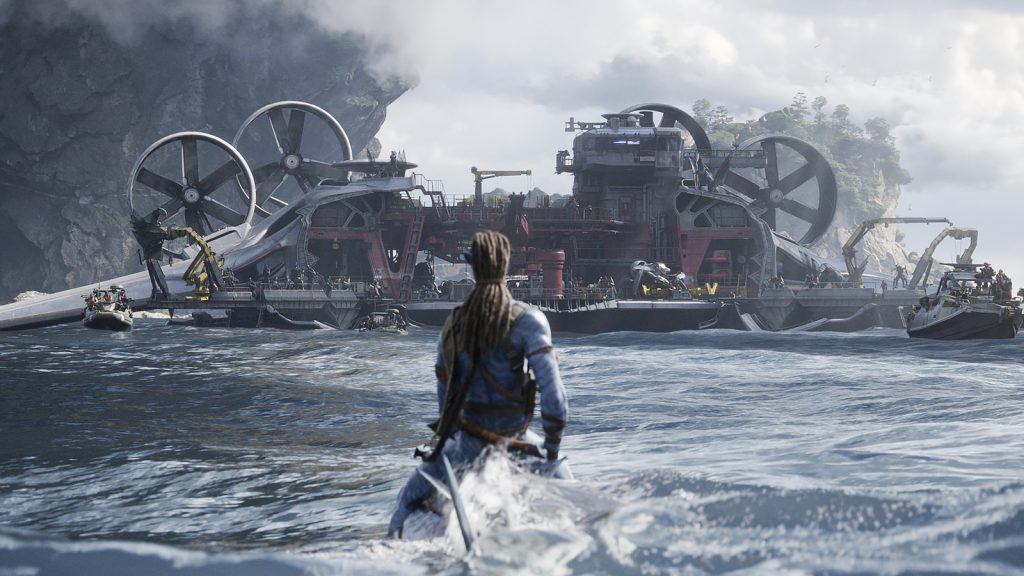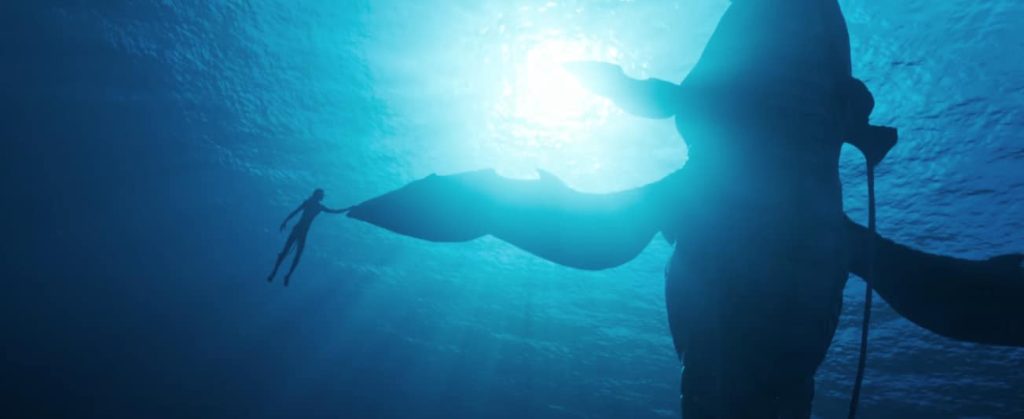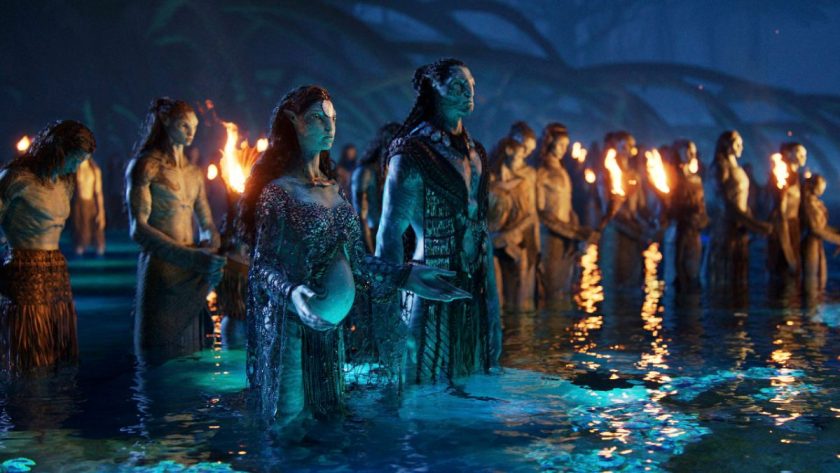Lavanya Nayar reviews James Cameron’s long-anticipated sequel to his 2010 sci-fi epic, starring Sam Worthington, Zoe Saldaña, Sigourney Weaver and Stephen Lang.
Fourteen years ago, Avatar arrived as a magical gift for families reuniting around Christmas festivities and transported them to a faraway planet of lush rainforests and blue aliens. This ground-breaking immersive 3-D experience, conceived using brand-new motion capture filming techniques, stupefied children and adults alike and pioneered the technological change that would send shockwaves throughout the film industry in the years to come. The $237 million budget invested in this visual revolution was well worth the bet and made it one of the highest-grossing films in history, as well as an Academy Award winner for Best Art Direction, Best Cinematography, and Best Visual Effects.

Following this immense success, James Cameron signed with 20th Century Fox to direct four Avatar sequels. Avatar: The Way of Water, which landed in theatres across the world last December, propels us more than a decade after the hard-fought victory ending the first opus. Jake Sully (Sam Worthington), now the chief of the Omaticaya clan, blissfully raises his family with Neytiri (Zoe Saldaña), which is composed of their sons Neteyam and Lo’ak, their daughter Tuk, Grace Augustine’s daughter Kiri (Sigourney Weaver), and Colonel Miles Quaritch’s (Stephen Lang) human son Spider. Unfortunately, all good things must come to an end, and the humans return once more to colonise Pandora, this time in the form of recombinants: avatars implanted with the memories of deceased Resources Development Administration (RDA) marines, who had previously attempted to eliminate the Na’vi natives to mine the valuable mineral unobtanium. Drum roll: leading the enterprise is Quaritch’s recombinant.
After a perilous first encounter with Quaritch’s squad, which results in the abduction of Spider, the Sullys exile themselves from the Omaticaya and seek shelter with the Metkayina reef people. There begins an interwoven initiation story, during which each member of the family learns the ways of water through their own struggles and surprises. In this second volume, Cameron introduces us to a new, bluer-than-ever dimension of Pandora, which proves to be as mesmerising as its exhilarating terrestrial landscapes and creatures.
To create these oceanic images, the film blends live-action filming in a 900,000-gallon tank with performance capture and takes another massive leap forward in terms of visual effects. By developing innovative underwater motion capture technology, Cameron was able to generate surprisingly authentic pictures of his imaginary sea world, as the motions of bodies and their surroundings mimic the behaviour of submerged objects in real life. Mesmerising scenes of kaleidoscopic shoals of fish segue into pictures of phosphorescent anemones and scintillating whales’ innards, illustrating a fantastic ecosystem where all things are attuned to the rolling movement of waves – which has no end nor beginning. This ode to the natural world also entails an unabashed rejection of humanity, as even mechanical inventions mimic the anatomy of sea creatures – crab-shaped submarines – and signs of human biological lineage- five-fingered hands – are demonised. How ironic it is, then, to invest $300 million to shoot fake plants in a plea for deep ecology.

The camera never stands still. Each shot ecstatically succeeds another in Cameron’s frenzy to document as much as possible of his abundant digital fauna and flora – under different lighting, from a parallel point of view, with another focus. This dynamism also translates into sensational battle dioramas and spine-tingling sequences of underwater entrapment, straightforward nods to the director’s oeuvre (particularly Titanic). The film’s frantic rhythm and constant flow of new images displaying eccentric landscapes and animals effectively stimulate the audience enough to follow the protagonists’ repeated kidnappings and rescues, and 3 hours just fly by.
That said, the scenario presented by the film is dreadfully prosaic and simply replicates the first Avatar’s model of an epic science-fiction journey of self-discovery. The imperialist humans are still big bad boys, yet again satirically drinking coffee from their mugs, and instead of chasing unobtanium they are now hunting Tulkuns for their brain enzymes. Rather than following Jake’s initiation to the customs of the Omaticaya clan, we are now watching the whole family learning to adhere to the rites of the Metkayina clan – just a change of name and scenery. Although the environmentalist, anti-colonialist and community-centred ideals explored in Avatar were impactful at the time, Jake’s patronising voiceover in Avatar: The Way of Water is simplistic and repetitive. We get it, we have to live in communion with Eywa’s creation and family is above everything else.
Nevertheless, the stories of the new members of the Sully family are relatively refreshing and promising. Despite the dialogue lacking substance and hardly allowing the actors to delve into their characters, each child is given an arc and the film opens multiple doors for sequels to develop their stories further. In particular, Lo’ak’s rebellious loner persona is not overplayed, and Kiri’s supernatural connection with Eywa is both intriguing and hypnotising. The only disappointment is Spider, whose Luke Skywalker-like origin story could have raised intricate questions about identity but was elementarily dealt with.
The flaws of Avatar: The Way of Water are indeed rooted in the fact that it is reduced to a bridge between the first Avatar and further sequels, instead of being envisaged as a film of its own. Yet, the failures of this iteration do not rule out the potential for an innovative and exciting Avatar 3. All we can hope for is that James Cameron will not casually transpose the same story to a new setting, with yet another tribe of Na’vis living in a not-yet-discovered part of Pandora.
Avatar: The Way of Water is currently playing in theatres across the UK. Watch the trailer for the film here:




